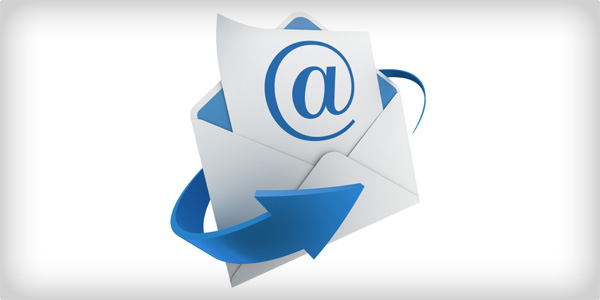 As the digital landscape continues to mature and shift, it’s become more difficult for businesses both large and small to stand out. New customer acquisition and retention, which are key to a company’s growth, can seem an insurmountable obstacle if your business’ online presence is lacking. To differentiate themselves,smart businesses are turning to content to engage prospective customers through thought leadership, a B2B-facing added value strategy that may make their offerings more attractive than a competitor’s, and content that is fun and entertaining. Whether it’s original or drawn from other sources (and properly attributed), in the form of blog posts on a company blog, images shared via social media, or video on YouTube, content can provide just the edge a business needs to convert online eyeballs into lifelong customers.
As the digital landscape continues to mature and shift, it’s become more difficult for businesses both large and small to stand out. New customer acquisition and retention, which are key to a company’s growth, can seem an insurmountable obstacle if your business’ online presence is lacking. To differentiate themselves,smart businesses are turning to content to engage prospective customers through thought leadership, a B2B-facing added value strategy that may make their offerings more attractive than a competitor’s, and content that is fun and entertaining. Whether it’s original or drawn from other sources (and properly attributed), in the form of blog posts on a company blog, images shared via social media, or video on YouTube, content can provide just the edge a business needs to convert online eyeballs into lifelong customers.
However, this is much easier said than done. With so few employees stretched across multiple disciplines, small businesses often face time and resource constraints. Mid-sized and large businesses, which have national and international focal points, are challenged by their multidimensional audiences. Not to mention, content development is an intricate process. Where does a business wishing to develop a content strategy start?
Despite these complications, in this complex and crowded online media landscape, content is a necessary avenue for all businesses to invest in. Here are a few ways that you can initiate a targeted content strategy for your business.
Hone In on Your Target Audience
Developing content that consumers choose to engage with takes a keen understanding of your business’s target audience. Knowing who your audience is and what they react to is paramount to determining the type of content to develop as well as which channels to use to engage them.
 The easiest way to understand your customer is to leverage any proprietary sales data you have about your existing customer base and your business’s vertical. From here you can determine demographics, preferred media platforms, purchasing habits, and more. For businesses with multiple segments, it’s recommended that you start with the biggest segments first – those that will potentially net you the most customers.
The easiest way to understand your customer is to leverage any proprietary sales data you have about your existing customer base and your business’s vertical. From here you can determine demographics, preferred media platforms, purchasing habits, and more. For businesses with multiple segments, it’s recommended that you start with the biggest segments first – those that will potentially net you the most customers.
For small businesses in particular, this can be a challenge. Access to deep insights and customer data on a smaller scale can be expensive or difficult to implement. However, free tools like Google Analytics can provide data surrounding web visitor demographics, including gender, age group, location, and even interests (broken out by categories like food & drink, sports, computers & electronics, travel, etc.). By layering these core data points with insights gleaned from free online research reports from eMarketer or TrendWatching.com, you can get an idea of which channels your audience uses.
For large and mid-sized businesses, however, data is more readily available. In addition to a sea of information surrounding existing customers, larger businesses typically have research departments that can tap into syndicated data sources like Experian Simmons for additional insights into an audience’s behavior, lifestyles, attitudes, brand preferences, and media use. Where larger businesses find difficulty is in their multifaceted audiences; targeting an audience comprised of multiple demographics is a complex undertaking. To develop a multipronged strategy that can check all of these boxes, it’s worth considering dedicating an employee solely to managing your business’s content strategy.
Determine Which Channels to Use
 After you’ve analyzed your target audience, it’s necessary to determine which channels to use to reach them. Approach your strategy from an acquisition perspective, recognizing that each consumer you engage has the potential of becoming a lifelong customer. Consider not only your audience, but your product, its core offerings, and what you’re aiming to achieve from a marketing perspective.
After you’ve analyzed your target audience, it’s necessary to determine which channels to use to reach them. Approach your strategy from an acquisition perspective, recognizing that each consumer you engage has the potential of becoming a lifelong customer. Consider not only your audience, but your product, its core offerings, and what you’re aiming to achieve from a marketing perspective.
Different channels serve different purposes and audiences – i.e., social media channels engage readers in shorter, more frequent bursts, while blog posts or thought leadership articles provide longer, more structured thoughts with takeaways that can be clearly defined. Email newsletters are also an effective channel that provides a more direct method of reaching an audience head-on. You could even get creative and start a LinkedIn group to drive conversation surrounding hot topics in your industry or lead an online webinar, sharing insights into how businesses within your vertical should operate. All of these channels have their benefits and drawbacks, but a strategy that cross-pollinates content from one channel to the others can drive the greatest results.
For example, a small clothing retailer looking to drive immediate engagement and response might find social media – in particular visual social channels like Instagram – most effective in reaching their goals. But by coupling a social strategy with longer-form thought leadership that, for instance, highlights fashion trends on your brand’s blog, cross-channel engagement can be taken to the next level. Content could also be repurposed within an owned seminar or event; in this example, the retailer could show off the latest trends in a part-runway/part-education event that engages select influencers and “superfans” on a much more intimate level. (A B2B business, such as a medical group, could similarly tap into syndicated health content and repurpose it across owned media.) As a result, consumers will develop a more favorable impression of your brand and will be more likely to try out your product or service.
 Small businesses looking to leverage the power of a combined content strategy should be careful not to spread themselves too thin. Ultimately, engaging your audience across one or two channels effectively is more valuable than struggling to provide consistent, quality content across multiple channels. Start small and grow from there. Generally, the most effective channels for small businesses are social media (Facebook, Twitter, and perhaps Instagram depending on the product) and a company blog.
Small businesses looking to leverage the power of a combined content strategy should be careful not to spread themselves too thin. Ultimately, engaging your audience across one or two channels effectively is more valuable than struggling to provide consistent, quality content across multiple channels. Start small and grow from there. Generally, the most effective channels for small businesses are social media (Facebook, Twitter, and perhaps Instagram depending on the product) and a company blog.
Mid-sized and large businesses, however, should aim to engage their audiences utilizing a wide-reaching multichannel content strategy. With each additional owned media channel employed, audiences can be targeted at a broader, deeper level. And with budgets that are typically more substantial, these businesses can funnel funds into producing original video content, which has been shown to have a positive impact in engaging audiences, according to ReelSEO. These businesses can also develop email programs, which target customers with thought leadership content, and invest in email marketing tools that allow them to measure response. Large businesses should harbor an “early adopter” mentality, consistently testing out new and innovative channels to engage forward-thinking consumers.
Contextualize Your Content and Execute
To give your content the edge it needs to stand out, think as your target consumer. What would you want out of your brand? Is the information being shared timely, relevant, and helpful?
A brand’s voice is a major factor when an audience decides whether or not content is worth consuming. Ultimately voice and tone inform content and how it should be consumed. Develop a clearly articulated tone and voice for your brand. Are you aiming to be more informative, spark emotion or inspiration in your audience, or make your brand top of mind using humor? Some categories naturally lend themselves to more creative freedom in developing a brand’s voice (e.g., DiGiorno Pizza’s Twitter feed is lauded consistently for its humorous approach to customer engagement), while others – for instance a healthcare company – require a more serious tone. Above all, ensure that your voice is authentic to your brand. It should feel natural, an extension of what your brand represents. Also ensure that the same person (or people) is updating the same channel – too many people contributing to one feed can lead to an inconsistent tone.
 Along with voice, frequency of messaging is a crucial consideration. Between social media, blog posts, and original video, the optimal frequency for customer engagement can be tricky to perfect. You want to distribute content frequently enough that you can create a narrative surrounding your brand, but you don’t want to overburden the consumer with too many messages. Start out with a frequency you deem appropriate, and listen to customer feedback for insight. If you’re already generating a healthy conversation, there may be no need to up your frequency. Conversely, if conversation is thin or nonexistent, it may be beneficial to increase frequency.
Along with voice, frequency of messaging is a crucial consideration. Between social media, blog posts, and original video, the optimal frequency for customer engagement can be tricky to perfect. You want to distribute content frequently enough that you can create a narrative surrounding your brand, but you don’t want to overburden the consumer with too many messages. Start out with a frequency you deem appropriate, and listen to customer feedback for insight. If you’re already generating a healthy conversation, there may be no need to up your frequency. Conversely, if conversation is thin or nonexistent, it may be beneficial to increase frequency.
Finally, develop a content schedule that you adhere to consistently. Plan out the topics you will cover, and consider tying content to certain events throughout the year. For instance, in the week preceding Black Friday, a thought leadership article highlighting trends in clothing sales could drive significant traffic to a retailer’s owned media. Similarly, social media messages surrounding a hot topic or news item can drive serious eyeballs to your social channels. Whatever schedule you decide to follow, ensure that content is disseminated on a regular basis. Disjointed frequency can actually be anti-productive to your goals, as it can set an unrealistic precedent in terms of distribution.
By leveraging these tenets of content marketing strategy as your guiding light, you can develop a content strategy that will bolster your business’s bottom line. And to amplify results even further, consider complementing your owned content with a paid digital media strategy consisting of native executions.
- 3 Tips for Developing a Laser-Focused Content Strategy for Your Business - February 23, 2015


